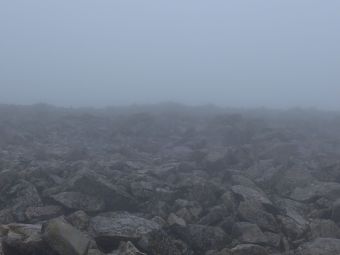Luke McQuade, January 2022
📷 Flag: “Scotland Grunge Flag” by Free Grunge Textures - www.freestock.ca, CC BY 2.0.
Banner and others: L. McQuade.


Finding suitable camping spots using weighted overlay analysis
Luke McQuade, January 2022
📷 Flag: “Scotland Grunge Flag” by Free Grunge Textures - www.freestock.ca, CC BY 2.0.
Banner and others: L. McQuade.
Scotland, unlike the rest of the United Kingdom, offers the right to roam and wild camp across the country’s open land (with a few restrictions). This makes it a good place for ad-hoc outdoor adventures.
But, due to the rugged terrain and uneven ground, especially in the more rural areas, finding suitable camping spots is not always easy. Scotland does however, have the largest forest cover in the UK (~18%, as of 2019). Without detailed local knowledge, this makes the hammock the ideal choice for camping.
That said, not all woodland is suitable for hanging a hammock:
See also, Grand Trunk’s guide to hammock safety.
A region around the small, coastal city of Inverness in the Highlands is the focus of this investigation. The area features rolling hills, and encompasses part of the famous Loch Ness and the Caledonian Canal as it meets the Beauly Firth. Weighted overlay analysis is performed using the built-in tools of QGIS.
Typical Highland landscape.
 Summit of Ben Nevis
Summit of Ben Nevis
Surfaces that are unaccommodating for tents can appear flat on all but the highest-resolution elevation models.
Ancient Caledonian forest can be a tempting destination, but extra care has to be taken in this delicate environment.
Dangers from wildlife are minimal, for now. (Though still be careful around cows.)
Given some of the factors discussed earlier, a model for suitable hammock-camping spots can be created. There are some hard requirements that have to be fulfilled, and then preference or desirability can be considered. A final suitability rating of 1 to 5 (higher is better) is assigned.
An approach similar to @spatialthoughts’ Multi Criteria Overlay Analysis guide was taken, mainly using the Raster Calculator and Proximity (raster distance) tools.
| Criterion | Rationale |
|---|---|
| In woodland | It’s difficult to hang a hammock otherwise. |
| At least 100m from built-up area | For discretion, and less likely to encroach on enclosed land. |
| At most 500m from water | For cooking and cleaning. |
| Within 100m of an accessible trail | Trekking through woodland can be difficult. |
| Not less than 10m from trail | For discretion, and to account for width of track. |
All of these have to be true for a candidate site, so model these with binary layers (values 0 and 1) and multiply them all, creating an essential mask.
| Criterion | Weighting | Rationale |
|---|---|---|
| Forest type: Deciduous Broadleaf | 1 | Most likely to have obstructing undergrowth. |
| Forest type: Coniferous | 4 | Most likely to have clear distance between trees. |
| Forest type: Mixed | 2 | Has characteristics of each of the above. |
| Within 5km of a supermarket | 0.5 | Access to supplies, approx. 1hr one-way. |
| Within 2.5km of a pub | 0.5 | Access to beer, approx. 1hr round-trip. |
Multiply each by the essential mask and its weighting, and sum the results to create the final suitability layer.
| Criterion | Rationale |
|---|---|
| Terrain | Most walkable slopes are suitable for a hammock. The region of interest (RoI) doesn’t have many unwalkable slopes. |
The UK has a leading national map provider, Ordnance Survey. While there are many datasets offered under an open license, unfortunately the public footpath/hiking trail network is not available. OpenStreetMap (OSM) however, is popular enough in the area that it should be reliable enough for our needs.
The following Overpass Turbo query fragment was used to find the walking-accessible (non-private) tracks, from minor roads to footpaths/trails.
type:way AND highway!=motorway AND highway !=trunk AND highway!=primary AND highway!=motorway_link AND highway!=trunk_link AND highway!=primary_link
AND access!=customers AND access!=private AND access!=no
OSM was also queried to find the pubs (amentity=pub) and supermarkets (shop=supermarket) in the area.
Again, OSM was consulted for forested areas. However, the woodland type was not always present in the data, and an alternative source had to be found.
Fortunately in 2021, Space Intelligence with NatureScot released a land cover dataset with 20m spatial resolution, discriminating coniferous, deciduous broadleaf, and mixed forest. This also features built-up and inland water, which are useful for the other criteria in our analysis.
A fully comprehensive source of forestry data was discovered later in the investigation - the Forestry Commission’s National Forest Inventory.
NoData can be troublesome when combining layers. It is coercive. For instance, a landcover layer may have NoData defined for sea areas within its extent. Have a raster layer for docked ships in that area that you want to combine it with? In the raster calculator, these rules apply:
0 * 0 = 0{anything} * NoData = NoData{anything} + NoData = NoDataSo, you’d probably end up with an empty result.
Also, take care when rasterizing vectors - unset the ‘Assign a specified nodata value’ option to give empty areas a value of 0, so it can be used as an overlay.
Another rule: 0 / 0 = NoData. This is useful to know when wanting to filter out 0 values, e.g. (source)
"layer@1" / ("layer@1" > 0)
r.null can be used to go the other way, assigning 0 in place of NoData.
QGIS project (a little messy).
Go to page source.